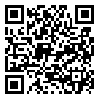دوره 9، شماره 4 - ( 8-1400 )
جلد 9 شماره 4 صفحات 228-221 |
برگشت به فهرست نسخه ها
Download citation:
BibTeX | RIS | EndNote | Medlars | ProCite | Reference Manager | RefWorks
Send citation to:



BibTeX | RIS | EndNote | Medlars | ProCite | Reference Manager | RefWorks
Send citation to:
Mottaghi Dastgerdi N, Faghihi H. A Review on Suggested Mechanisms in Thrombocytopenia and Thrombosis Following ChAdOx1 nCoV-19 Vaccination. Res Mol Med (RMM) 2021; 9 (4) : 1
URL: http://rmm.mazums.ac.ir/article-1-450-fa.html
URL: http://rmm.mazums.ac.ir/article-1-450-fa.html
A Review on Suggested Mechanisms in Thrombocytopenia and Thrombosis Following ChAdOx1 nCoV-19 Vaccination. Research in Molecular Medicine. 1400; 9 (4) :221-228
چکیده: (2209 مشاهده)
Background: ChAdOx1 nCov-19 vaccine is a viral vector-based vaccine with desirable protection (about 70.4%, two weeks after the second dose). Few reports were released on thrombocytopenia associated with thrombotic events shortly after the ChAdOx1 nCov-19 vaccination. However, the exact pathophysiologic mechanism of this vaccineinduced thrombotic complication has not yet been elucidated. Vaccine-induced thrombotic thrombocytopenia syndrome (VITTS) is associated with detecting anti-platelet factor 4 (PF4) antibodies that are not yet linked to previous exposure to heparin.
Materials and Methods: In the current review, based on relevantly reported cases, possible mechanisms are suggested on the relationship between the anti-platelet factor 4 (anti-PF4) antibody assays, previous exposure to heparin, and the involved mechanisms of post-vaccination thrombocytopenia and thrombotic events, which might help the experts for selecting the appropriate therapeutic measures.
Materials and Methods: In the current review, based on relevantly reported cases, possible mechanisms are suggested on the relationship between the anti-platelet factor 4 (anti-PF4) antibody assays, previous exposure to heparin, and the involved mechanisms of post-vaccination thrombocytopenia and thrombotic events, which might help the experts for selecting the appropriate therapeutic measures.
Results: Possibly involved mechanisms in VITTS after ChAdOx1 nCoV-19 vaccination include binding of anti-PF4 antibodies to heparin/PF4 complex or receptor-binding domain (RBD) protein-PF4 complex. Another mechanism could be the binding of anti-RBD antibodies to the RBD protein-PF4 complex. Finally, anti-RBD or anti-PF4 antibodies may bind to the heparin-RBD protein-PF4 complex. The binding of either of the mentioned antibodies to these complexes via the Fc/angiotensin-converting enzyme 2 receptors can cause activation/removal of platelets leading to thrombocytopenia and thrombosis.
Conclusion: The suggested mechanisms in this article provide a relationship between the results of anti-PF4 antibody assays, previous exposure to heparin, and the involved mechanisms of post-vaccination thrombocytopenia and thrombotic events, which might help the experts in selecting the therapeutic measures.
Conclusion: The suggested mechanisms in this article provide a relationship between the results of anti-PF4 antibody assays, previous exposure to heparin, and the involved mechanisms of post-vaccination thrombocytopenia and thrombotic events, which might help the experts in selecting the therapeutic measures.
شمارهی مقاله: 1
| بازنشر اطلاعات | |
 |
این مقاله تحت شرایط Creative Commons Attribution-NonCommercial 4.0 International License قابل بازنشر است. |





